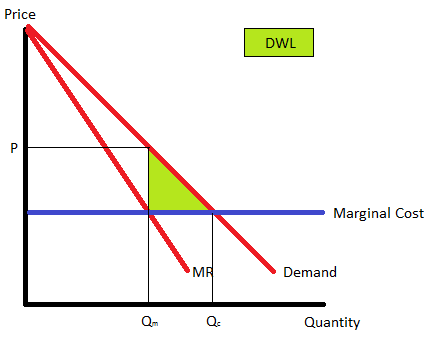本笔记直接从 Notion 签出,内容不全,格式混乱,内容或有错误,仅供参考
本文 All Right Reserved 保留所有权利,禁止商用和任何形式的转载!
Unit 1: Basic Economic Concept
Opportunity Cost
\(\text{Opportunity Cost} = \frac{\text{forgone}}{\text{gain}}\)
Possibility Production Frontier

Shift of OC
- Point Shift
- Inside the Frontier
- Input resources do not be allocated efficiently
- Unemployment
- Input resources do not be allocated efficiently
- On the Frontier
- Resources have been allocated efficiently
- Outside the Frontier
- We can comsume by importing goods
- Impossible
- Inside the Frontier
- Curve shift
- X Tech increase → X Border shift outward
- No effect
- Demand of product
- Price of product
- Other factor that don’t do with allocating efficiency
Shape of OC
Bowed outward / convex
- Increasing OC
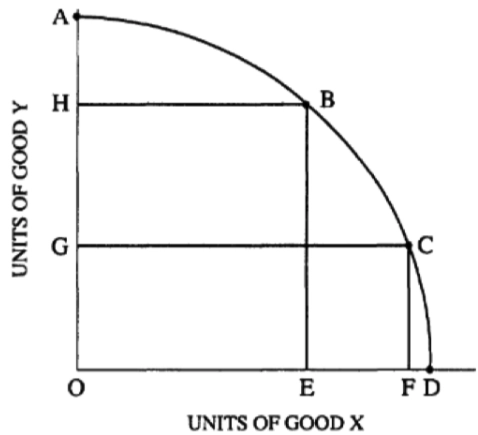
Bowed in / concave
- Decreasing OC
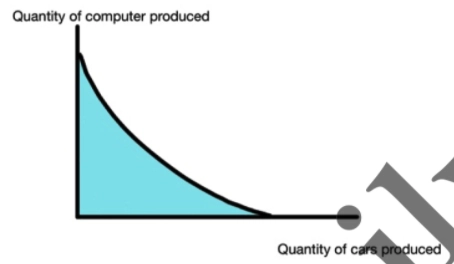
Straight Line
- Constant OC
- Resources are completely adaptable to alternative uses
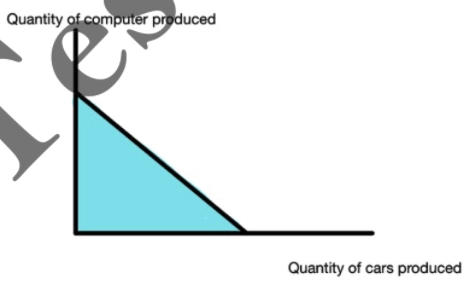
AP Classroom
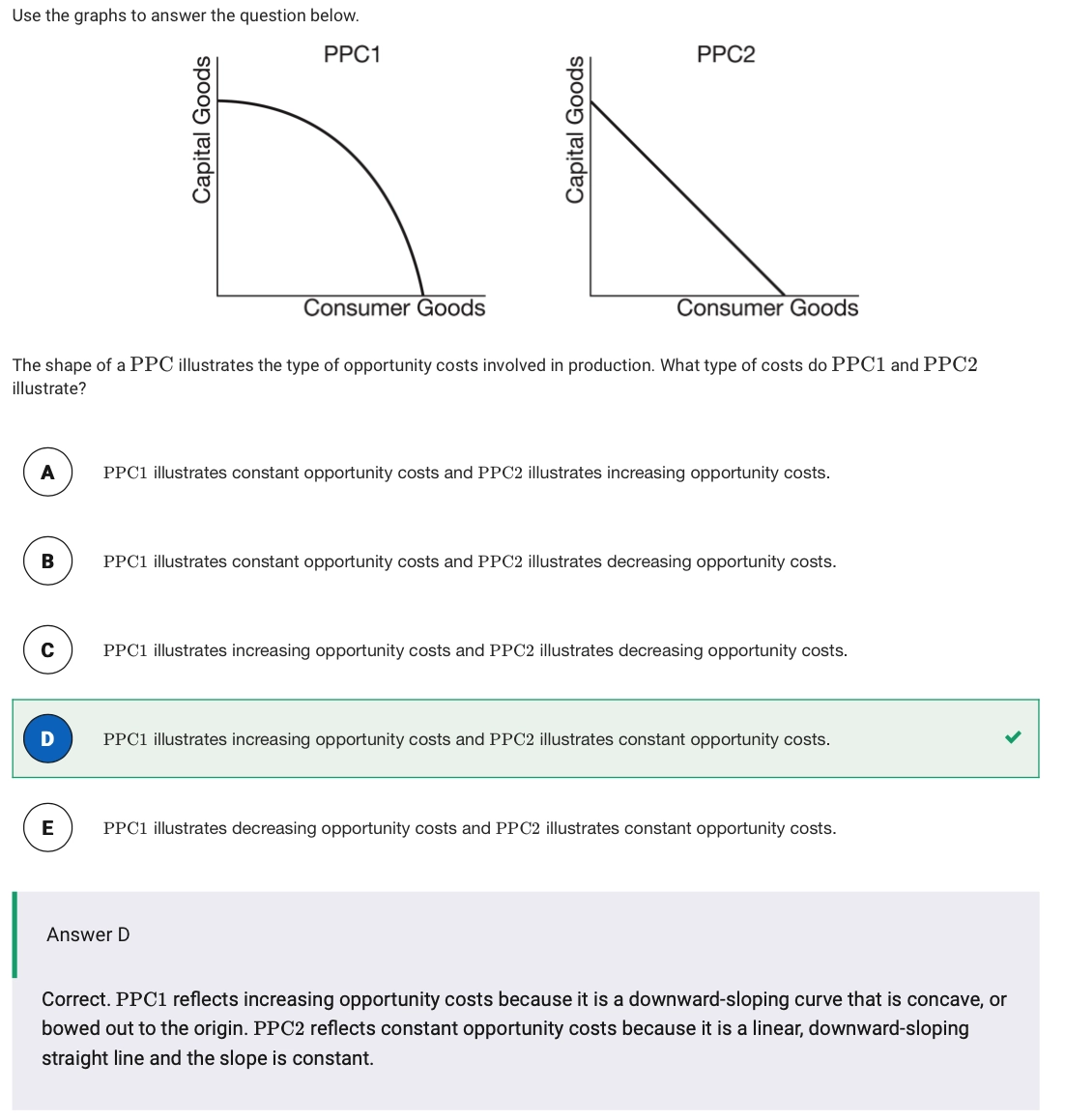
Absolute Advantages
- Someone using same input could absolutely gain greater amount of some product than others.
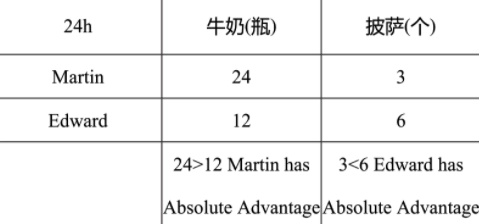
- Someone using same input could relatively / comparatively have lower opportunity cost than others.
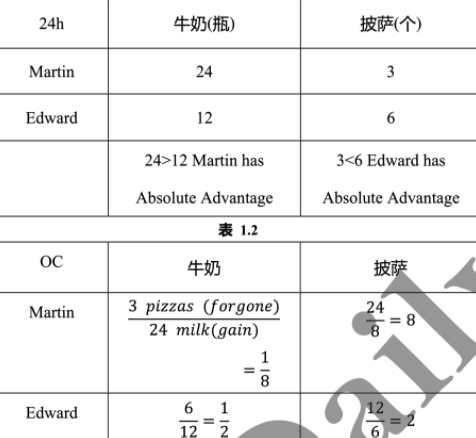
- Comparative Advantage
- Milk: Martin
- Pizza: Edward
- Input question: \(N\) hours → produce \(1\) unit
- Output question: \(24\text{(or arbitrary fixed hours)}\) -> \(N\) unit
- Generally, we transform the input question to output question through a fixed input hours. (e.g \(24\) hours)
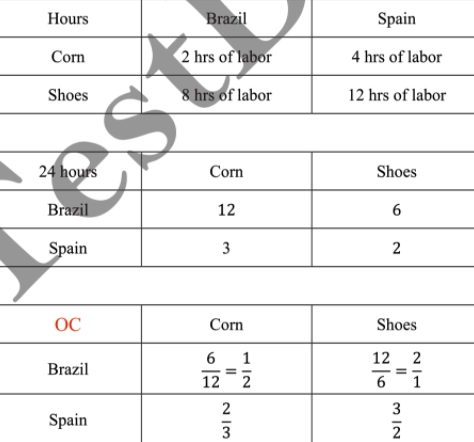
Trade Price
- If countries trade based on the opportunity cost, country A would uses one unit product A to exchange a range amount of product B between country A OC of product A to country B OC of product A.
- Price of product A will be a range between \(2 \sim 3\)
Utility
- Maximizing Utility Formula
\[\frac{\text{MU}_x}{\text{P}_x} = \frac{\text{MU}_y}{\text{P}_y}\]
- Double income, price
- No effect
Unit 2: Supply and Demand
Elasticity
General Formula
\[\text{Elasticity} = \frac{\Delta\text{Quantity}\%}{\Delta\text{Price}\%}\]
Change rate (Take \(\Delta Q\) as an example)
Divide original amount of quantity
- A to B
\[\Delta \text{Quantity}\% = \frac{Q_B - Q_A}{Q_A} \]
- B to A
\[\Delta \text{Quantity}\% = \frac{Q_A - Q_B}{Q_B}\]
Mid-point
\[\Delta \text{Quantity}\% = \frac{Q_A - Q_B}{\frac{Q_A + Q_B}{2}}\]
Elasticity of Curve
- tend to be even / horizontal curve
- more elasticity
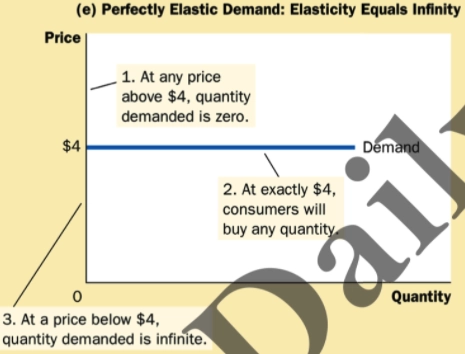
- tend to be steep / vertical curve
- more inelasticity
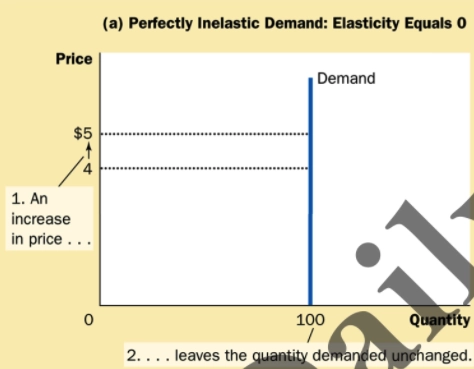
TR & Elasticity
- As shown in the following figure: Firms usually operate in \(\text{Elasticity} > 0\) since \(MR > 0\), \(TR\) is continuously increasing.
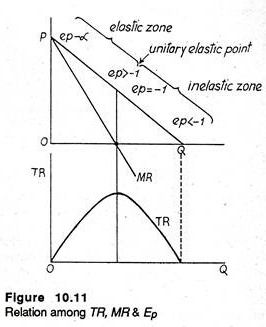
Income Elasticity of Demand (IED)
\[\text{IED} = \frac{\Delta\text{Quantity}\%}{\Delta \text{Income}\%}\]
- \(\text{IED} > 0\), which means \(\Delta Q,\;\Delta I\) changing toward same direction. Normal Good (+)
- \(\text{IED} < 0\), which means \(\Delta Q,\;\Delta I\) changing toward opposite direction. Inferior Good (-
Cross-price Elasticity of Demand (XED)
\[\text{XED} = \frac{\Delta\text{Quantity}_X\%}{\Delta \text{Price}_Y\%}\]
- \(\text{XED} > 0\), which means \(\Delta Q_X,\;\Delta P_Y\) changing toward same direction. Substitutes (+)
- \(\text{XED} < 0\), which means \(\Delta Q_X.\;\Delta P_Y\) changing toward opposite direction. Complement (-)
Efficiency
Allocated Efficiency
- Maximize the Total Surplus, \(\text{S = D}\)
- Example
- Market equilibrium
- Supply = Demand
- Perfectly Competitive Market MC (Supply) = MR (Demand)
Production Efficiency
- Production Efficiency is Minimize the Production Cost
- Example:
- ATC intersects MC
Tax
Per-unit Tax
- Per-unit Tax: Size of Tax
- For Example:
- Per-unit Tax is \(\$3.30 - \$2.80 = \$0.5\)
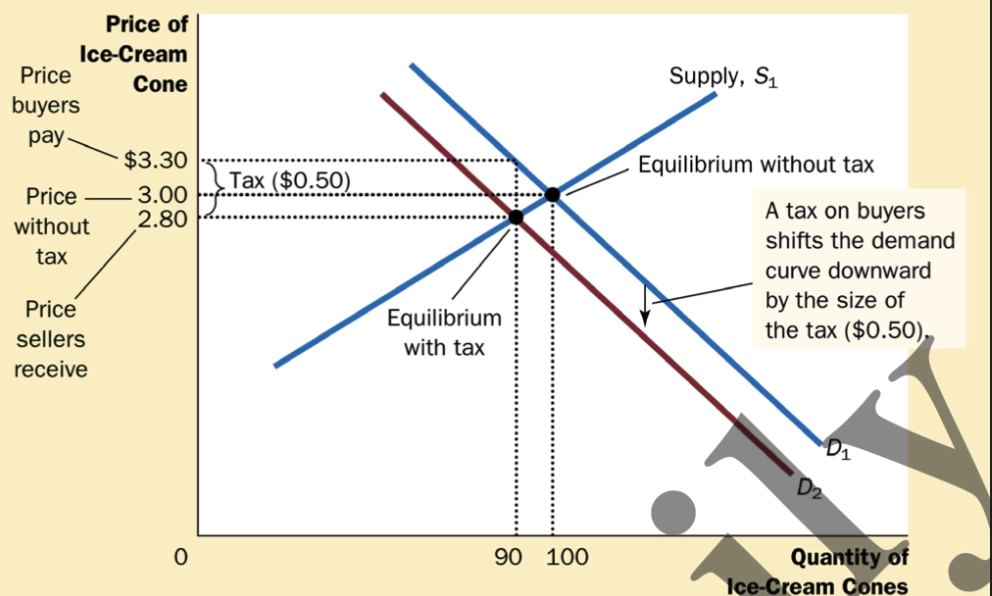
Tax and Elasticity
- Which curve is more elastic, the less tax they need to pay.
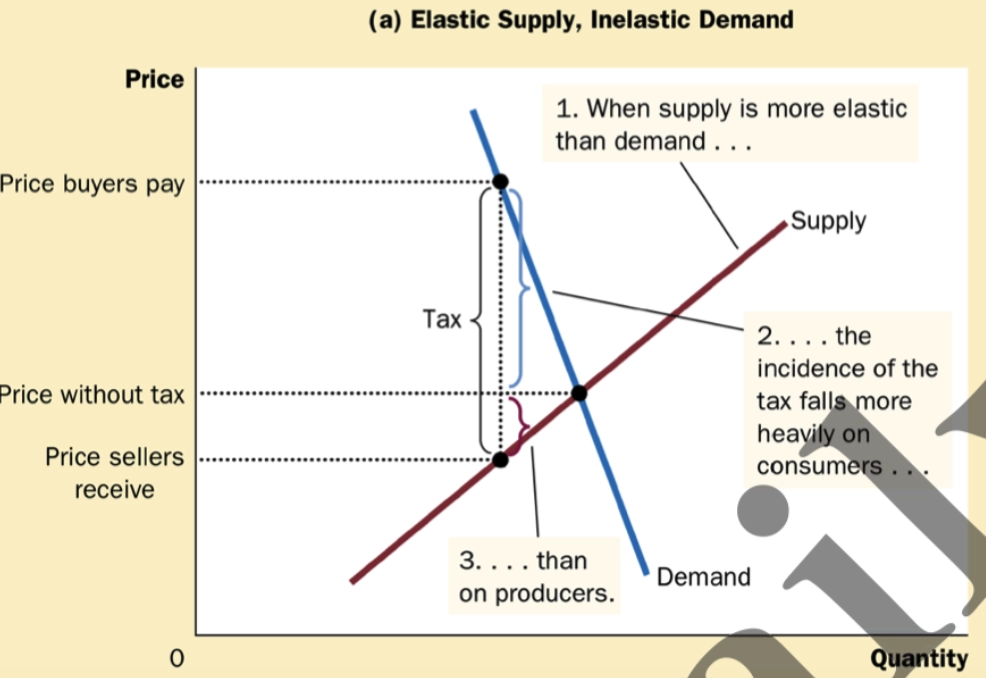
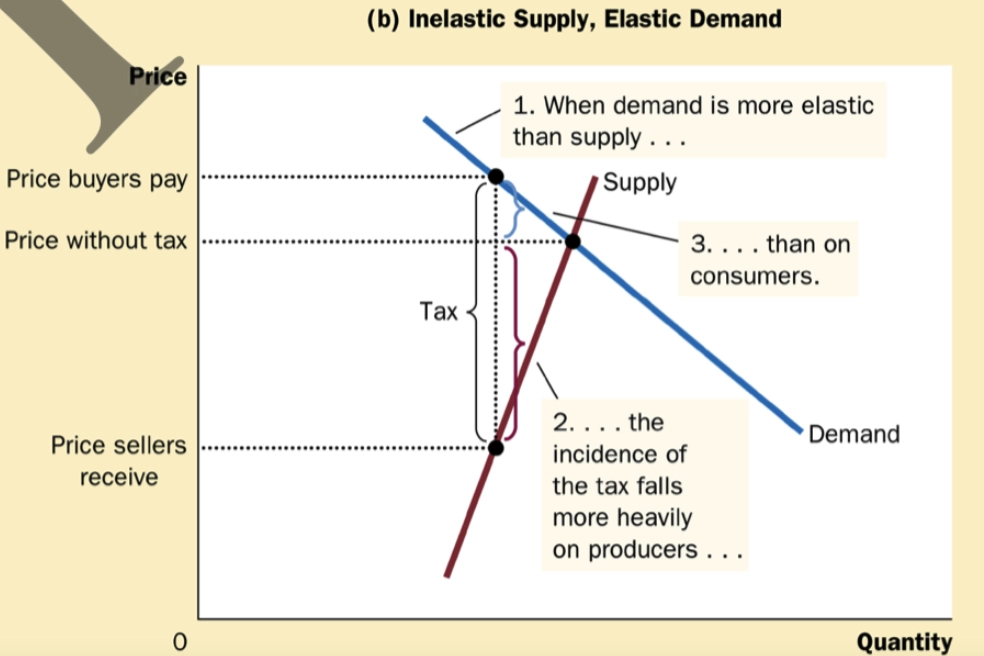
Deadweight Loss
- The surplus that consumer surplus and producer surplus could not reach.
\[\text{Deadweight Loss} = \text{Total Surplus} - (\text{Comsumer Surplus} + \text{Producer Surplus})\]
Government Action
- Price Ceiling
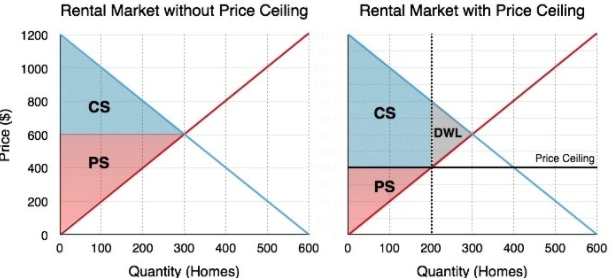
- Price Floor
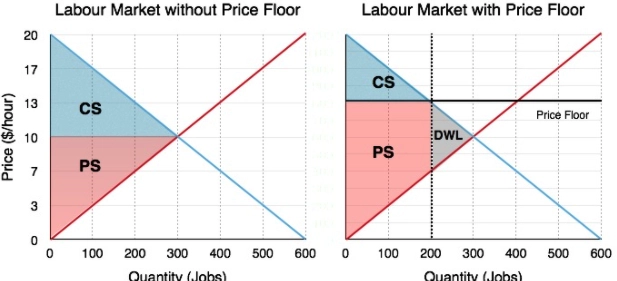
- Tax
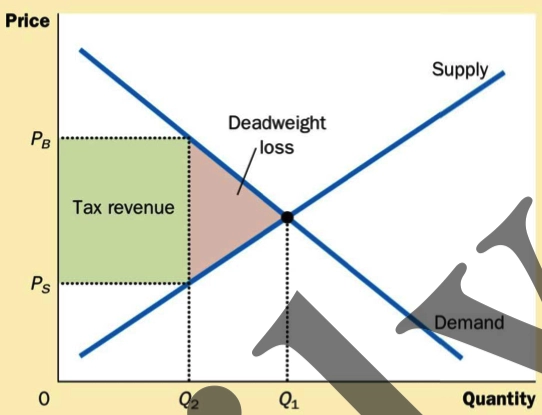
- Tariff
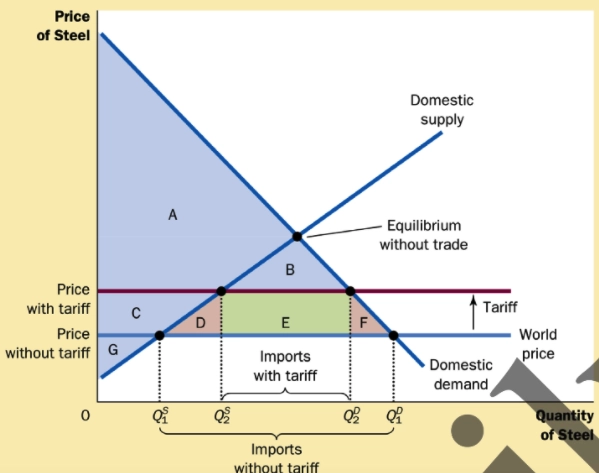
- Subsidy
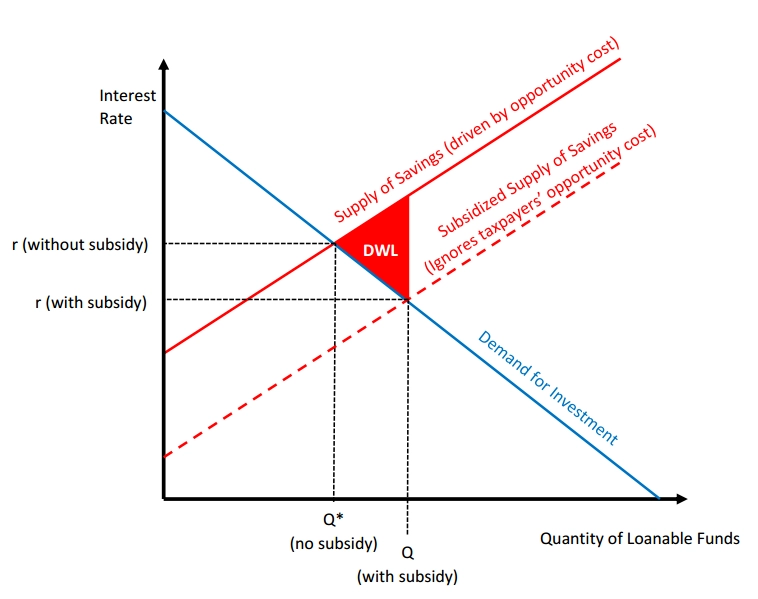
Monopoly
